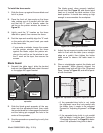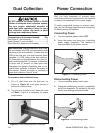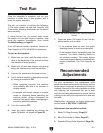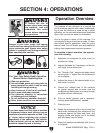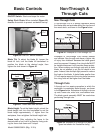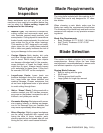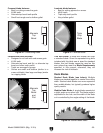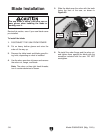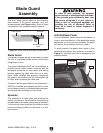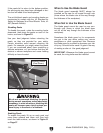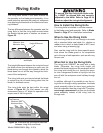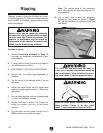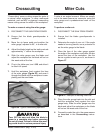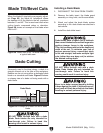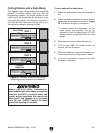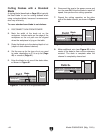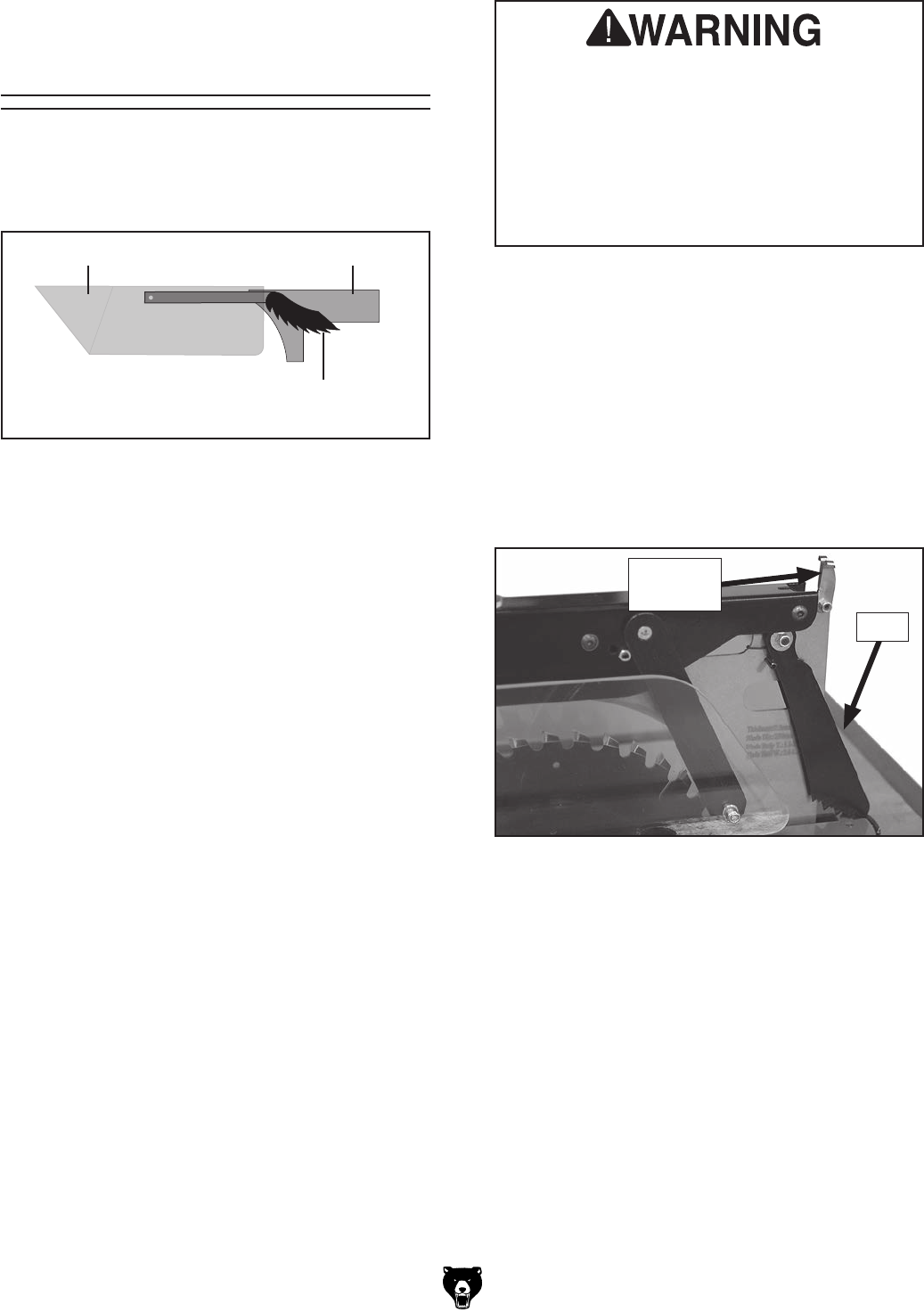
Model G0690/G0691 (Mfg. 11/10+)
-37-
Anti-Kickback Pawls
The anti-kickback pawls allow the workpiece to
travel in only one direction. If the workpiece moves
backwards, such as during a kickback, the pawls
will dig into the workpiece to slow or stop it.
To work properly, the pawls must return to their
bottom-most position after pivoting, as shown in
Figure 51, and they must not be engaged in the
arresting hooks.
Figure 51. Pawls in return position.
Pawl
Arresting
Hooks
In order to work properly, the spreader
cannot be bent or misaligned with the blade.
If the spreader gets accidentally bent, take
the time to straighten it or just replace it.
Using a bent or misaligned spreader will
increase the risk of kickback! Refer to
Page 68 to check or adjust alignment if
necessary.
Blade Guard
The guard encloses the top of the blade to reduce
the risk of accidental blade contact and contain
flying chips or dust.
The
guard is designed to lift as the workpiece is
pushed into the blade
,
remain in contact with the
workpiece
during the cut
, then return to a resting
position against the table when the cut is com-
plete. When installed and properly maintained,
the guard is an excellent tool for reducing the risk
of injury when operating the table saw.
To ensure that the guard
does its job effectively,
it
MUST be installed and adjusted so that it moves
up and down properly to accommodate workpiec-
es and maintain coverage over the blade.
Blade Guard
Assembly
The term "blade guard" refers to the assembly
that consists of the guard, spreader, and anti-
kickback pawls (see Figure below). Each of these
components have important safety functions.
Figure 50. Blade guard assembly components.
Clear Shield Spreader
Anti-Kickback
Pawl
Spreader
The spreader is a metal plate that prevents the
freshly cut pieces of the workpiece from pinching
the backside of the blade
and causing a
kickback.
It
also acts as a barrier behind the blade to
shield
hands from being pulled into the blade if a kick-
back occurs.



